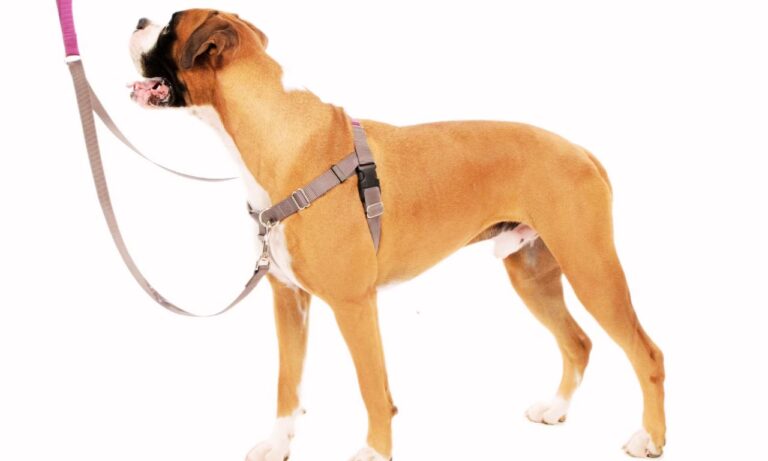| Summary: The 80/10/10 raw dog food diet mimics a dog’s natural ancestral diet—80% muscle meat, 10% raw meaty bones, and 10% organ meats (5% liver). Using a 80/10/10 raw dog food calculator helps ensure proper nutrition, based on weight and activity level. Proper handling and portioning are crucial for a balanced diet. |
Understanding the correct proportions and ensuring a balanced diet is crucial when feeding a raw diet. That’s where an 80/10/10 raw dog food calculator comes in handy. It simplifies the meal-planning process, ensuring your dog gets the right amount of nutrients based on their weight, activity level, and dietary needs.
The 80/10/10 raw dog food diet is a popular feeding approach among dog owners who prefer a natural, species-appropriate diet for their pets. This diet consists of 80% muscle meat, 10% raw meaty bones, and 10% organ meats (with 5% being liver). The goal is to mimic what a dog’s ancestors would consume in the wild, promoting overall health, longevity, and vitality.
In this guide, we will explore the 80/10/10 raw feeding ratio, how to use a raw dog food calculator, benefits and risks of raw feeding, and tips for transitioning your dog to this diet. The best collar size for an American Staffordshire Terrier ensures a comfortable and secure fit for your dog during walks and training.
Blog Highlights
ToggleQuick Fix Table for 80/10/10 Raw Dog Food Calculation
| Dog’s Weight (lbs) | Daily Food Intake (lbs) (2.5%) | Muscle Meat (80%) | Raw Meaty Bones (10%) | Organ Meat (10%) (5% Liver, 5% Other) |
| 10 lbs | 0.25 lbs (4 oz) | 3.2 oz | 0.4 oz | 0.4 oz (0.2 liver, 0.2 other) |
| 25 lbs | 0.63 lbs (10 oz) | 8 oz | 1 oz | 1 oz (0.5 liver, 0.5 other) |
| 50 lbs | 1.25 lbs (20 oz) | 16 oz | 2 oz | 2 oz (1 liver, 1 other) |
| 75 lbs | 1.88 lbs (30 oz) | 24 oz | 3 oz | 3 oz (1.5 liver, 1.5 other) |
| 100 lbs | 2.5 lbs (40 oz) | 32 oz | 4 oz | 4 oz (2 liver, 2 other) |
💡 Tip: Adjust portions based on your dog’s activity level (increase for active dogs, decrease for less active ones).
What Is the 80/10/10 Ratio in Raw Feeding?
The 80/10/10 ratio is a guideline used by raw feeders to ensure their dogs receive balanced nutrition. Here’s a breakdown of each component:
80% Muscle Meat
Muscle meat forms the foundation of the raw diet, providing essential proteins, amino acids, and fats. This includes cuts like beef, chicken, turkey, lamb, pork, and fish. Muscle meat helps with muscle development, tissue repair, and energy production.

10% Raw Meaty Bones (RMBs)
Raw meaty bones supply essential calcium and phosphorus, contributing to strong bones and teeth. Common choices include chicken wings, turkey necks, duck feet, and beef ribs. Cooked bones should never be fed, as they can splinter and cause internal damage.

10% Organ Meat (5% Liver, 5% Other Organs)
Organ meats are nutrient-dense and provide vital vitamins and minerals like iron, B vitamins, and essential fatty acids. The diet should include 5% liver (a crucial source of Vitamin A) and 5% other secreting organs, such as kidney, spleen, pancreas, or brain. To find out the what size collar for an Affenpinscher, ensure you measure your dog’s neck correctly for a perfect fit.

How to Use an 80/10/10 Raw Dog Food Calculator
A raw dog food calculator is a simple tool that helps pet owners determine the correct portion sizes based on their dog’s weight. The general feeding guideline is 2-3% of the dog’s body weight per day, but this can vary based on age, activity level, and metabolism.
Step 1: Determine Your Dog’s Weight and Activity Level

- Inactive or Senior Dogs: Feed around 2% of their body weight.
- Moderately Active Dogs: Feed 2.5% of their body weight.
- Highly Active or Working Dogs: Feed 3% or more of their body weight.
- Puppies: Require 4-6% of their body weight, depending on growth stage.
Step 2: Calculate Daily Food Intake
Use the formula:
dog’s weight (lbs) × feeding percentage (%) = daily food intake (lbs)
For example, if you have a 50-lb moderately active dog:
50 × 2.5% = 1.25 lbs of food per day
Step 3: Apply the 80/10/10 Ratio
Once you determine the daily food intake, divide it according to the ratio:
- Muscle Meat (80%): 1.00 lbs
- Raw Meaty Bones (10%): 0.125 lbs (2 oz)
- Organ Meat (10%): 0.125 lbs (2 oz) (with 5% liver and 5% other organs)
This breakdown ensures your dog gets all essential nutrients without deficiencies.
Benefits of the 80/10/10 Raw Diet
1. Improved Digestion and Nutrient Absorption
Raw food is highly digestible and free from artificial additives or fillers, reducing gastrointestinal issues like bloating and diarrhea.
2. Healthier Skin and Coat
Raw feeding provides essential fatty acids, leading to a shinier coat, reduced shedding, and healthier skin free from allergies and irritations.

3. Stronger Immune System
Whole, unprocessed foods support immune function, reducing the risk of chronic illnesses and infections.
4. Better Dental Health
Chewing raw meaty bones naturally cleans teeth, preventing plaque buildup, gum disease, and bad breath.
5. Increased Energy and Vitality
Dogs on a raw diet often exhibit more energy, improved stamina, and better overall well-being. For a step-by-step guide on how to wear collar to an Affenpinscher, check out this detailed article to ensure a comfortable and secure fit for your dog.
Risks and Challenges of Raw Feeding
1. Nutritional Imbalances
Improperly formulated raw diets can lead to deficiencies or excesses of certain nutrients. Using an accurate calculator helps maintain balance.
2. Bacterial Contamination
Raw meat carries bacteria like Salmonella and E. coli. Safe handling, proper storage, and sourcing from reputable suppliers minimize risks.
3. Bone-Related Injuries
While raw meaty bones are beneficial, feeding inappropriate bone sizes can lead to choking or blockages. Always supervise mealtime.
4. Cost and Sourcing Challenges
High-quality raw feeding can be costly and requires careful sourcing. Buying in bulk and using local butchers can help manage costs.
Tips for Transitioning Your Dog to Raw Feeding
1. Start Slowly
Introduce raw food gradually over 7-10 days, replacing kibble with small portions of raw meals to avoid digestive upset.
2. Keep Hydration in Check
Ensure your dog has access to fresh water, as raw feeding changes hydration needs compared to kibble.
3. Use a Variety of Proteins
Rotate between different meats (chicken, beef, turkey, fish, lamb) to provide a diverse range of nutrients.
4. Monitor Weight and Adjust Portions
Keep track of your dog’s weight and body condition to make necessary adjustments to portion sizes.
Sample Raw Feeding Meal Plan
Here’s a sample 7-day meal plan for a 50-lb moderately active dog eating 1.25 lbs per day:
| Day | Muscle Meat (80%) | Raw Meaty Bones (10%) | Organ Meat (5% Liver, 5% Other) |
| Mon | Chicken Thighs | Chicken Wings | Beef Liver, Pork Kidney |
| Tue | Beef Chunks | Turkey Neck | Chicken Liver, Beef Spleen |
| Wed | Turkey Breast | Duck Feet | Lamb Liver, Pork Pancreas |
| Thu | Pork Shoulder | Chicken Necks | Chicken Liver, Beef Kidney |
| Fri | Lamb Chunks | Duck Wings | Beef Liver, Pork Spleen |
| Sat | Sardines | Chicken Wings | Chicken Liver, Beef Kidney |
| Sun | Ground Beef | Turkey Neck | Lamb Liver, Pork Pancreas |
Health Benefits of the 80/10/10 Raw Dog Food Diet
Switching to an 80/10/10 raw diet can bring numerous health benefits to dogs of all breeds and sizes. Since this diet is modeled after the natural eating habits of wild canines, it provides essential nutrients in a highly bioavailable form. Unlike processed dog food, which often contains artificial preservatives, fillers, and grains, raw food delivers pure, whole ingredients that support overall health.
One of the most noticeable benefits of this diet is improved digestion. Many commercial dog foods contain carbohydrates and fillers that dogs struggle to process efficiently. The raw diet, on the other hand, is high in protein and healthy fats, making digestion smoother. Pet owners often report firmer stools, reduced gas, and fewer digestive issues like bloating or diarrhea. Since raw food lacks artificial additives, it also reduces the risk of food intolerances and allergies, which are common with kibble.
Shinier Coat and Healthier Skin
A dog’s coat and skin health are strong indicators of their overall well-being. The 80/10/10 raw diet provides essential fatty acids that nourish the skin and coat from the inside out. Dogs on a raw diet often develop glossy, healthy fur that sheds less and feels softer. Omega-3 and Omega-6 fatty acids, naturally found in muscle meat and organ meats, help reduce itching, dandruff, and dry skin.
Many dogs with skin allergies experience significant improvement after transitioning to raw food. This is because processed food often contains allergens like wheat, corn, and soy. When these are removed and replaced with natural, fresh ingredients, many dogs show fewer signs of irritation, chronic ear infections, and excessive scratching. Over time, this results in fewer vet visits and a happier, more comfortable pet.
Conclusion: Is the 80/10/10 Raw Diet Right for Your Dog?
The 80/10/10 raw feeding model provides dogs with a natural, species-appropriate diet that supports optimal health. However, it requires careful planning, safe handling, and proper calculations to ensure balanced nutrition.
Using an 80/10/10 raw dog food calculator simplifies the process, helping pet owners determine the right portions for their dog’s weight and lifestyle. By following the correct guidelines, sourcing high-quality ingredients, and monitoring your dog’s health, raw feeding can be a rewarding choice for both dogs and their owners.
If you’re considering switching to raw feeding, consult with a veterinarian or a canine nutrition expert to create a plan tailored to your dog’s needs. Check out the best dog collars for Border Collie to find durable, stylish, and comfortable options for your active dog.





